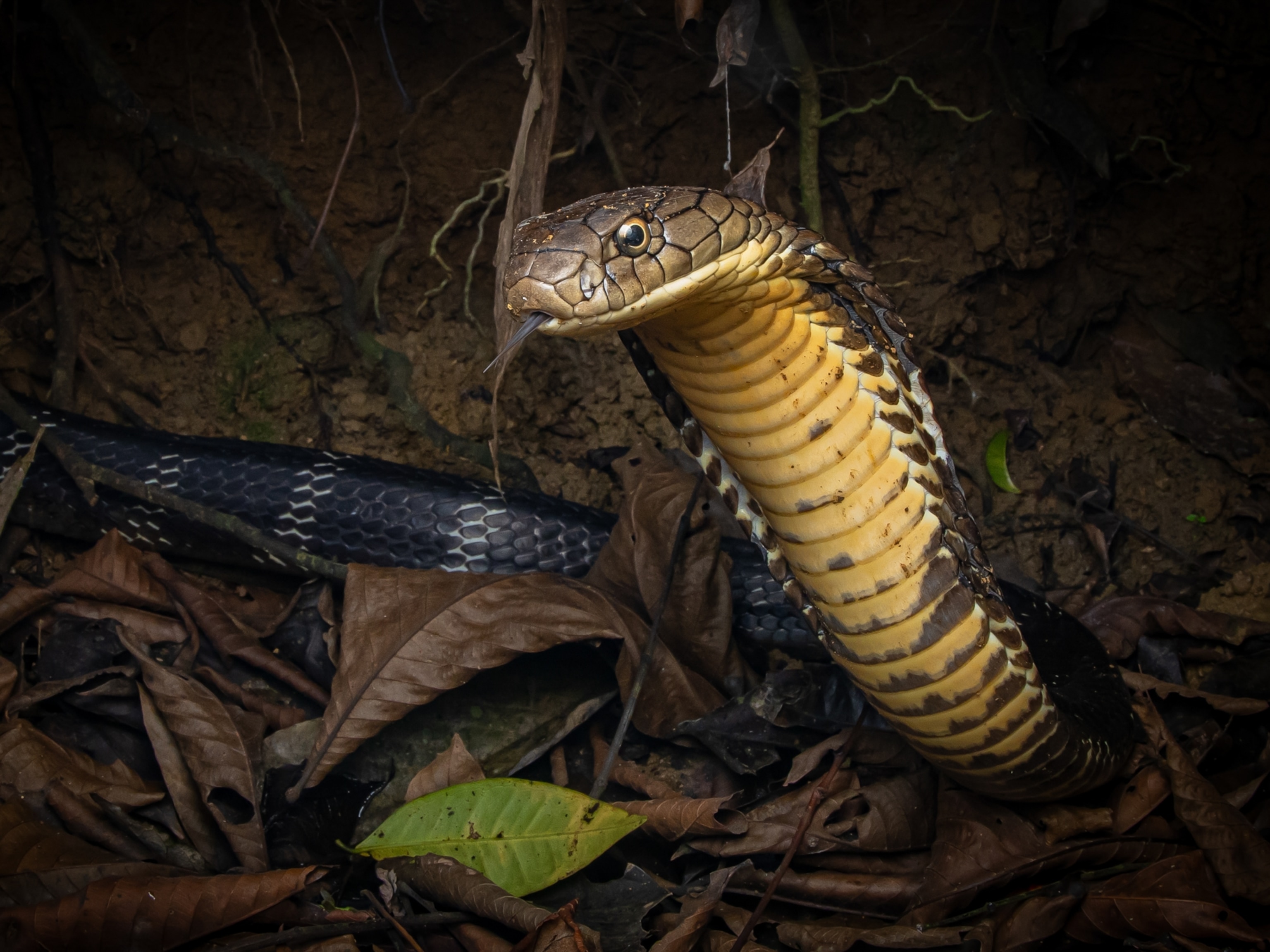Watch the Bizarre Moment a Snake Plays Dead
A new video shows a Texas indigo snake feigning death—an unsettling scene caught on camera. Do not handle wild snakes.
A video of a snake playing dead has surfaced online, thought to be unusual for the Texas indigo snake.
In the clip—first published online in mid-November—amateur herpetologist Eric Johnson of Mission, Texas, filmed himself grabbing the harmless reptile, which can reach lengths of more than six feet. Suddenly the snake freezes and gapes its mouth, appearing to fake death.
“I didn’t realize they had that behavior,” says Johnson in the original video. “I am dumbfounded.” (Also see “The Living Dead: Animals That Pretend to Go Belly-Up.”)
Herpetologist Toby Hibbitts of Texas A&M University confirmed that the video shows a death-feigning Texas indigo snake, noting that he has personally seen indigo snakes fake death before.
Patrick Gregory of Canada’s University of Victoria, an expert on snake behavior, agreed that the video shows a snake pretending to be dead. “It wasn’t a full-blown display, but it had important elements, [such as] a contorted body and an open mouth.”
The video marks the first time Gregory has seen film of the behavior in indigo snakes, though he notes that in 2010, a researcher reported death-feigning in the closely related eastern indigo snake. New reports of snake death-feigning are frequently added to the scientific literature, he adds: “It’s an occasional behavior for lots of species, and a [common] behavior for some,” he says.
Break a Leg—Or Not
Species as varied as opossums, red flour beetles, and mallard ducks play dead as a strategy to deter predators.
“I think of it as a last-resort tactic,” says Gregory. “It might work, for example, if a predator’s attention wanes because the snake isn’t moving and it looks elsewhere, allowing the snake to escape.”
He cautions, however, that death-feigning snakes are not well documented with natural predators: Most studies on the behavior come from people handling wild-caught snakes.
That said, even in experimental settings, snakes have shown themselves to be some of nature’s most dramatic death-scene actors. (Read about how high-speed video debunked a snake myth.)
The hognose snake (Heterodon platirhinos) of the eastern U.S. is famous for dangling its tongue limply from its mouth and leaking fluid out of its cloaca, its all-purpose hole.
The grass snake (Natrix natrix), found throughout Europe and Asia, is similarly talented, even letting prospective predators roll it onto its back—normally a snake no-no, since it exposes the vulnerable belly.
Don’t Try This at Home
Against such dramatic competition, Gregory grades the indigo snake’s performance as somewhat subdued.
“I noticed it occasionally flicked its tongue during its display,” he says. “That’s something at least that grass snakes don’t do when they’re full-blown death-feigning.”
Gregory cautions, however, that people shouldn’t touch wild snakes, much less make them freeze up: Playing dead is likely stressful for the snake, as well as uses valuable energy needed to hunt and find mates.
What’s more, the harmless Texas indigo snake is listed as a threatened species under Texas state law—all the more reason not to try this at home.
Venomous or not, it’s never advisable to touch wild snakes. For instance, Johnson writes that his love of reptiles has nearly cost him dearly: In all, he says that he has been bitten eight times by venomous snakes, and has faced near-lethal allergic reactions along the way.
But his tangle with the Texas indigo snake is bearing scientific fruit. Johnson said by email that he is working with Texas State University doctoral student Mayra Oyervides to publish his observations in the scientific literature.
“After all, being a kid at heart, I have no intention of relinquishing my personally satisfying hobby anytime soon,” he writes. “Perhaps I will succeed in making a contribution to the professional herpetological community along the way!”




